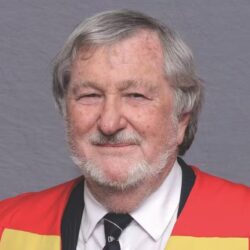Computational Social Science: A New Way of Working and Thinking
A programming skillset opens up a huge world of research opportunities. Social media APIs provide you quick access to vast amounts of social network data, and web scraping allows you to look at any website and transform it into a data set. Text analysis, network analysis, data visualization, and even just the ability to restructure, aggregate and summarize data through exploratory data analysis—these techniques open up a whole world of new questions, and new ways of finding answers. From a research perspective it is truly transformative.

However, data analysis won’t give you all the answers. It is not a replacement for our established methods or for well-earned substantive expertise, far from it. These techniques work best when integrated in collaborative working relationships, ideally with someone who’s not a computational social scientist.
I would argue that computational social science necessitates collaboration, and indeed is tamed by it. A collaborative approach provides the necessary structure, goals, and a critical approach to research methods. In response to the question of what computational social science has helped me achieve, it may seem obvious to mention the concrete projects, the outputs, the measurable outcomes. However, for me computational social science has achieved something more substantial and enduring—a new way of working, a new way of thinking, and a new kind of enthusiasm for research.
BREAKING OUT OF THE FIELD
Throughout my early academic career I focused almost exclusively on being a ‘single author’ author. I am proud of my early publications, which speak to my then-interests of piracy networks, media materiality and the importance of recognizing software as an interpretive force. I delved into each topic obsessively, and each topic extracted significant amounts of energy and time from me.
Yet I also craved diversity in my work—new ideas, new projects and new questions—and as I burrowed for months and years at a time into a single topic, a plethora of other seemingly more societally urgent topics would pass me by. For me, and I imagine I am not alone here, this was hugely frustrating. I also recognized that jumping from one topic to another was not necessarily building my profile in any one field. My identity as a specialist was increasingly fractured, inarticulable to my colleagues, my institution and to myself because what I was working on did not express the totality of what I was interested in.
At a particularly low point of confusion about my ‘academic identity’, with the phrase publish or perish ringing in my ears, I was chasing ideas for papers that built on topics I had long become bored of. I realized that I no longer cared, and this is not a good place to be as an academic. Getting nowhere, I decided to do what had steered me well in the past: ignore what I was supposed to be doing and do what interested me instead. I committed my summer to learning to code in Python. I had no goal, no direction, no explicit measurable output attached to this activity. It was an interest, nothing more. It was glorious.
I began by revisiting the materials I had gathered from a web scraping workshop I had attended years earlier. From there I moved on to online tutorials and short courses on specific techniques and packages. I dove deep into Github, StackOverflow and Google Groups. I hammered away at errors in my code until the early hours and ran software structures through my head as I drove to work the next day. I watched YouTube videos on graph theory while I did the washing up. I was consumed. With each new technique discovered, new questions arose, new needs and therefore new possibilities and I needed to explore every one of them.

COLLABORATION
What mattered here wasn’t necessarily the nuts and bolts of the techniques I was learning, but the development of a ‘methodological imagination’ and an understanding of the application of these techniques. One day a colleague of mine, Dr. Anna Di Ronco mentioned a project idea she was considering based on the imagery used in protest action taking place on Twitter. Still happily consumed with my ‘un-directed learning’, I happened to be playing around with the Twitter API at the time. Within an hour we hashed out an idea to combine her project and my code, and within twenty-four I had built a (rickety but operational) custom tool for Anna’s project and was showing her the data. From that developed a fusion of computational techniques for data extraction and qualitative reading for analysis resulting in a paper, a funded research project, an open-source tool for Twitter Media Extraction and a long-lasting collaborative friendship. I was no longer a ‘single author’ author.
MORE THAN INSTRUMENTAL BENEFITS
I currently have six ongoing projects with six different collaborators across a multitude of institutions and disciplines. Each project addresses wildly different topics including environmental activism, human rights violations, tech industry discourses, alt-right politics, gig economy labor and the dark web. In all of these projects I am writing custom tools to generate unique data sets and develop analyses specific to the questions we are asking.
Collaborative authorship has substantial instrumental benefits: I am involved in many more grant applications, am able to have multiple papers on the go at once, and have translated my skills into a new BSc Sociology with Data Science for my institution. More important, however, are the less instrumental benefits. I have my diversity of topics and I have regained my excitement and passion about research. I may from time to time express exasperation over the sheer number of ongoing projects but, as a good friend and colleague of mine pointed out in response, I am much happier now. I have achieved an articulable identity, I am a Computational Social Scientist.
Do you want to upskill a group of students, faculty or staff in data science? SAGE Campus offers great packages for institutions.
Find out more and contact us for a quote.





























































































